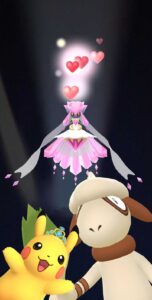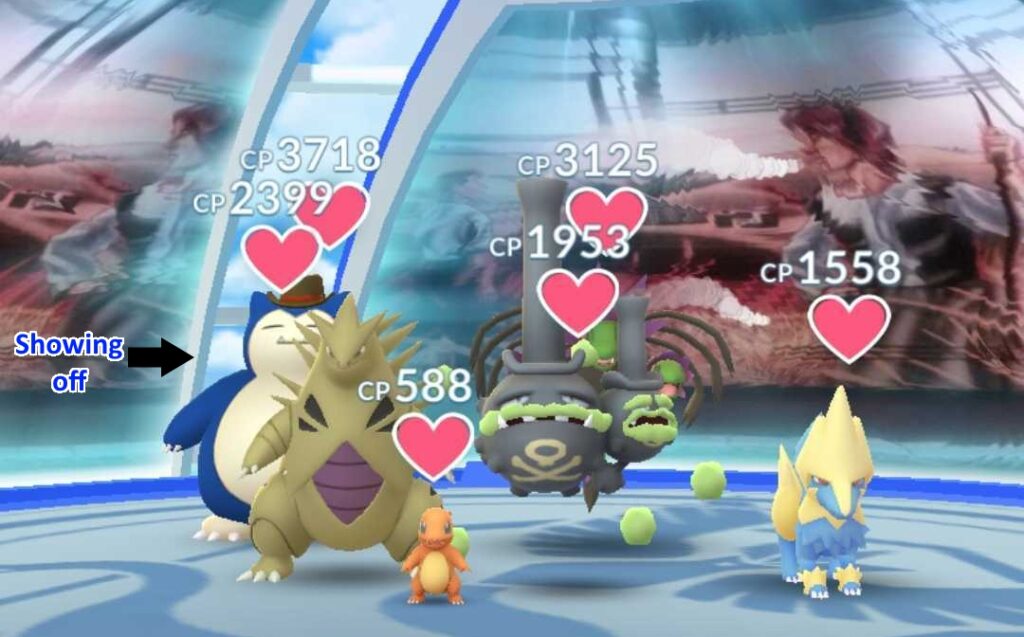
This year’s Pokemon Go Global Go Fest 2023 has officially ended, and it was… OK. It could’ve been a lot worse. Last year’s Go Fest proper was one of the worst ones, coming on the heels of one glaring misstep for the premium London Go Fest. The announcements we tackled in our guide made it clear that Niantic planned to keep this year’s event more vanilla than past years, but for this company and genre, that’s a good thing.
For today’s Massively on the Go, let’s talk a bit about how this event compared to last year’s disaster and Go Fests in general – as well as how pre-event game issues really stopped the event from truly soaring.
Bugs over dragons
If it wasn’t obvious from my Go Fest 2023 guide, this year’s main event was Mega Rayquaza, which had not one but two separate bugs associated with it. Niantic launching the Global Fest with these bugs, even after players exposed them prior to the New York Go Fest about them, was extremely disappointing, as was Niantic not publicly making these issues clear. If you don’t frequent certain forums or specifically watch the support website (as the support Twitter account mentioned neither issue), you’d never know this was a problem until during or after the event (which was the case with my group). With Niantic’s history, the problem most likely would have continued if players hadn’t been vocal about it.
That’s important because there weren’t a ton of features for Go Fest, especially compared to the important of Mega Ray. I argued last year that for POGO, less can mean more, in that by having a few cool things, people can focus on doing those more and enjoying them, rather than running around trying to do everything and being stressed about it. However, if any of those few things is broken or has questionable value, it affects the event that much more. That’s exactly why Day 1 of 2022’s Go Fest was so poorly received, as it was catch-heavy but had several bugs associated with spawns and catching.
“Questionable value” felt like the theme in the days approaching the event. Niantic has a history of selling tickets before giving out specifics, dangling small bonuses to recruit players early on. It’s not that the value isn’t always there. It often is, in terms of the cost of the items vs. what you get. The time investment, though, is often more of the issue. In some ways, Go Fest was looking like Hoenn Tour 2.0, in that the main raiding targets were ones we had back in February. While not advertised, seeing Pokemon Contests “Showcases” only drove that home, and though that’s not a terrible thing, it certainly took some wind out of the event’s sails, making most of us more hungry for Day 2 even before Day 1 landed.
While most of my group is casual, several of us have perfect Kyogres and/or Groudon as well as a good legendary Shiny. We did want candy to power up our pokés, but the Mega Rayquaza-less Saturday was far less anticipated. When locals at the previous week’s raid nights discussed how it would only start spawning an hour into Sunday’s event, they all asked, “Why?” and none of us could give an answer besides, “Niantic.”
I don’t mean that in the usual sarcastic way gamers may do with other big companies. Even someone like me severely struggles to put together a half-guess as to why the company makes certain decisions, not just in terms of game lore but even in terms of financial gain, as both are often highly questionable. Again, the base value of Go Fest was obvious from the start, and I still stand by that, but the previews alone made me guess that 2023’s Go Fest, at best, would be slightly better than 2022’s, which has been the second worst one of the seven we’ve had thus far.
Go Fest on the ground
The people I played with last year could barely remember the event, and most of what they remembered was out-of-game stuff. On the one hand, that suggests the game leads to positive socialization, but on the other, it makes the game seem forgettable. That’s not a strong advertising point. Similarly, as predicted, the Malachite spawn hour was the weakest and the one we ended up using as a break period twice. That being said, it was good to have a break, and there were still interesting spawns that prevented us from totally tuning out. While I remember last year’s bugs, as did others, it makes it seem like the feeling that this year is just better than last year is confirmed, at least in my local communities.
That’s important because Day 1 usually feels heavy. You have collection quests, the shinies you’re hunting for during hourly rotations, overall Go Fest quests, challenges, plus any real-life obligations, like coordinating food plans, pit stops, rest stops, having to check in on kids/pets… it can be a lot. At the same time, a lot of it isn’t very memorable. The Five-Year-Anniversary Go Fest feels legendary at this point, but what was interesting was that at the time, people preferred Day 1 to Day 2. There were a lot of factors in play, with COVID being a major one in terms of Day 2’s raiding emphasis, but I would wager part of this has to do with activities.
Go Fest Day 1 was kind of perfected during the 2021 event. What I described above originated there, except this year we didn’t get any branching quests. The costume pikachus themed on this year’s hourly gemstone habitats were plentiful, and while my group visually enjoyed them, there were also storage concerns, which we’ll discuss later. The spawns had their mix of trash and treasure, and while we may not have all gotten what we wanted or remember most of the day, I do think it has some long ramifications that can be positive once you get over the storage limitation issues (which sadly may be longer-lasting both in memory and as a problem). My friends have some really nice costume pokemon 2021’s Go Fest that they can and do use in raids in gyms, so there are positive associations with that event.
However, this year, the only costumed ‘mon we got that’s useable is Cowboy Hat Snorlax, and just barely since it’s not useful in raids. Already one friend has enjoyed rubbing her shiny in the faces of the community, but that’s kind of the highlight. I finally snagged my Perfect Metagross, which I’ve been chasing since 2018, and being able to get its Community Day move was great too, but I don’t think a casual player will remember that as much as the costumed pokemon. The lack of a simple-but-fun diverging quest only adds to this.
While one can try to point at Diancie and its Mega as a featured ‘mon, its landing beyond “How cute!” was flat. Bad IVs, little use in raids for its base form even against quad-weak-to-Rock types, and questionable utility for candy as a Rock/Fairy type made it all show and no substance. Carbink, being wild when no one expected it to be, was more interesting for my group and many players among the PvP community.
One major quality-of-life improvement, though, was the quests refreshing and renewing every hour. This really feels like a super late addition to the game, but still very much appreciated. It helped keep the group together in a small, specific area so we could walk instead of drive around at certain points. It really should be the standard for Go Fest and even the Tours going forward. It’s not that the tasks were super engaging; it just gave us stuff to look out for and kept everyone engaged. Written out, it may sound “boring,” but from what I saw, people were much more upbeat with “boring” Day 1 the past few years than being overwhelmed, at least when content worked, making this year a step up from the last Go Fest.
I think that’s part of why Day 2 for several events now has been better. Day 1 is a bit stressful, but Day 2 is when the bulk of players have found their footing. You have more focused goals for what pokemon you’re seeking, you have an idea of what you want to trade, all while focusing on just a few raid targets to look out for. This makes Day 2 infinitely more flexible for some of us.
Those of us who were early on Day 2 (as I assume we all have friends who arrive late thanks to other obligations or sleep needs) could raid as we pleased, while the stragglers could join up once they came out if you have enough people and/ore passes. That being said, many of us save our Premium Passes for big events like this, and having a large community in the area increases the likelihood of raid help while decreasing reliance on friends being hardcore and knowledgeable raiders, so no one feels locked-out of content. We had a very casual player join us, and she felt like playing the event in our chosen area made the game seem as popular as it had been in 2016. That is a really good sign, and I think the raid trains really helped drive that home.
The downside, of course, is that people with limited passes and smaller communities had only catching to focus on. Even the quests on Day 2 emphasized raiding. If you weren’t raiding, it could be easy to feel left out. I felt a little sorry for one of our group members who ran out of passes, though it was still enjoyable having her around, and she was able to check in-game things for us, as problems from Day 1 really stood out more during Day 2.

We saw raid issues both within my group and with the overall playerbase. The white screen of doom was bad enough, preventing people from rejoining the battle or even completing it in some cases, but full collection status (meaning your pokemon storage was full) not only caused people to miss raid rewards (also due to short raid timers) but also generated bugs where suddenly the game didn’t recognize that we had completed the raid. As raids were part of the first Go Fest, it’s downright embarrassing how these kinds of bugs still pop-up. All of us were affected by the white screen, which is long-standing but recently got worse, and it got magnified in small groups. Again, I was playing in a player-dense area, but on the fringes, we might as well have been rural players. I had estimated our group could tackle Mega Rayquaza ourselves, but when the bugs struck when we were away from the herd, we were very glad we had some remote players helping us – otherwise, even more of our passes would have been lost.
On average, my group did 22 raids per person over the course of the two-day event. Of the core four who were there the longest on both days, two of us had passes lost. Others simply got kicked out and couldn’t participate. I’d heard others around us and in the Discord chat also had issues. While this wasn’t the worst Niantic’s done, as I’ve mentioned before, expectations that the event will just function is the norm, and that once again failed to occur. I hate that my own expectations have fallen a bit too, but I will admit that, as someone who aggressively reports bugs and helps others file them, I know this could have been worse.
We’ll see how much compensation occurs for the lost items and ruined pokemon, as there were issues with the event moves too, causing evolved pokemon to not gain the advertised event moves. Niantic has been incredibly stingy with fixing these event-move-‘mon in the past. As I noted with the Vegas Hoenn Tour, I had three bugged raid pokemon lacking their event move, but I was compensated with only one Elite TM that would fix it.
This time, I have two pokemon that were affected, but once I discovered the issue, we sent out warnings to others who had gone home about being careful with evolving pokemon. We then proceeded to test which pokemon families were safe to evolve for their moves and which were not. Testing content should not be part of the live Go Fest experience, and anything short of exact compensation and a make-up day to evolve those pokemon for their event moves would only help confirm that Niantic is fine with the poor state of its quality control and customer satisfaction.
At worse, though, I feel this year’s Go Fest should be the standard. Average – a perfect C. There’s nothing wrong with average, especially after the furor we saw last year, but there is clearly room to improve. The new refresh and renew hourly quests from Pokestops has been a long-time coming, but certainly makes these events more accessible. There was a pretty good pokemon spread, but it wasn’t as exciting as in past years. And in terms of raids, we had only one new target. Everything else old and/or spawning in the wild, and with two whole days, it feels like just one more option could have helped. But that’s just the start of how the event could have been tweaked to be better.
 Building a better Go Fest
Building a better Go Fest
In terms of improvement, though, a few tweaks could go a long way. I know Pikachu is the mascot, but it would be nice if other costume pokemon came back. Cowboy Hat Snorlax was a good example of this, as it made something from last year available to everyone. Go Fests in the future could potentially do this with, say, Halloween costumes, which generally don’t come back the next year.
However, that and other costumes in general have one glaring issue that was a theme this whole weekend: storage. We’ve mentioned this before, but the number of pokemon/variants being added vs. purchasable storage space is at an all-time low. My friend who cares little for min-maxing teams and largely ignores PvP and isn’t sentimental about her ‘mon was hitting some storage issues. That says a lot.
Let’s pretend there are only 750 pokemon in game now (there are more). Accounting for 3 leagues, 2 genders, raids, shinies, and 2 main sizes, that would come to needing 6,750 storage slots, leaving you with only 50 slots for catching/trading per day (the daily trade limit is 50). That number ignores dual-types, event-move pokemon, location card pokemon, variants (i.e., Scatterbug’s 18 types), any sentimental pokemon (such as your tutorial starter), Shadow pokemon, Purified pokemon, and all costume pokemon. In short, unless you only place one or two very specific parts of the game or are incredibly Spartan about space, you probably don’t have the storage to go through a whole Go Fest without having to stop and make room constantly. That’s not fun, for you or any other players in your group waiting on you to help them raid or trade.
Not just before the next Go Fest, but before the upcoming Paldea ‘mon, Niantic needs to address this storage issue. Go Fest was fine enough this year. The pokemon spread was not bad, and some long-time useful pokemon got event moves they needed… for the most part. Bugs were there as always, and I do worry there won’t be proper compensation, marring the event. This is especially problematic in terms of Day 2’s raid content; last year bugs hit catching hard, then this year it was raids but more lightly. But during both days, the storage issue felt like it slowed us down even more. Of the issues, it seems like storage is the easiest and most profitable issue Niantic could tackle to improve things, which sounds easy to do – but will most likely be ignored.
 Massively OP’s Andrew Ross is an admitted Pokemon geek and expert ARG-watcher. Nobody knows Niantic and Nintendo like he does! His Massively on the Go column covers Pokemon Go as well as other mobile MMOs and augmented reality titles!
Massively OP’s Andrew Ross is an admitted Pokemon geek and expert ARG-watcher. Nobody knows Niantic and Nintendo like he does! His Massively on the Go column covers Pokemon Go as well as other mobile MMOs and augmented reality titles!

















